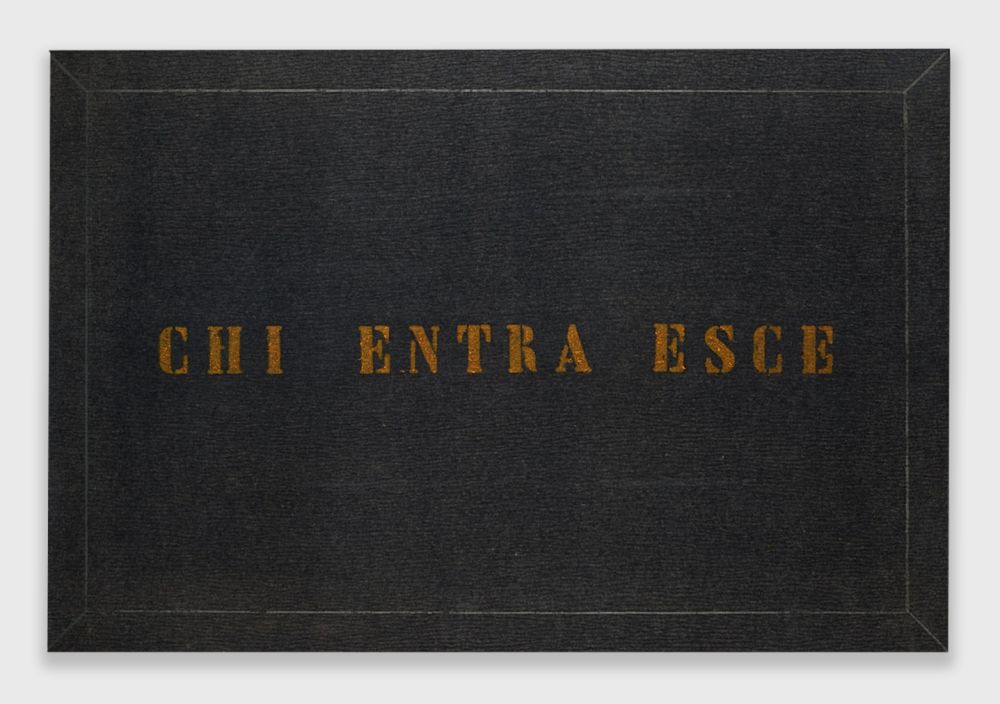
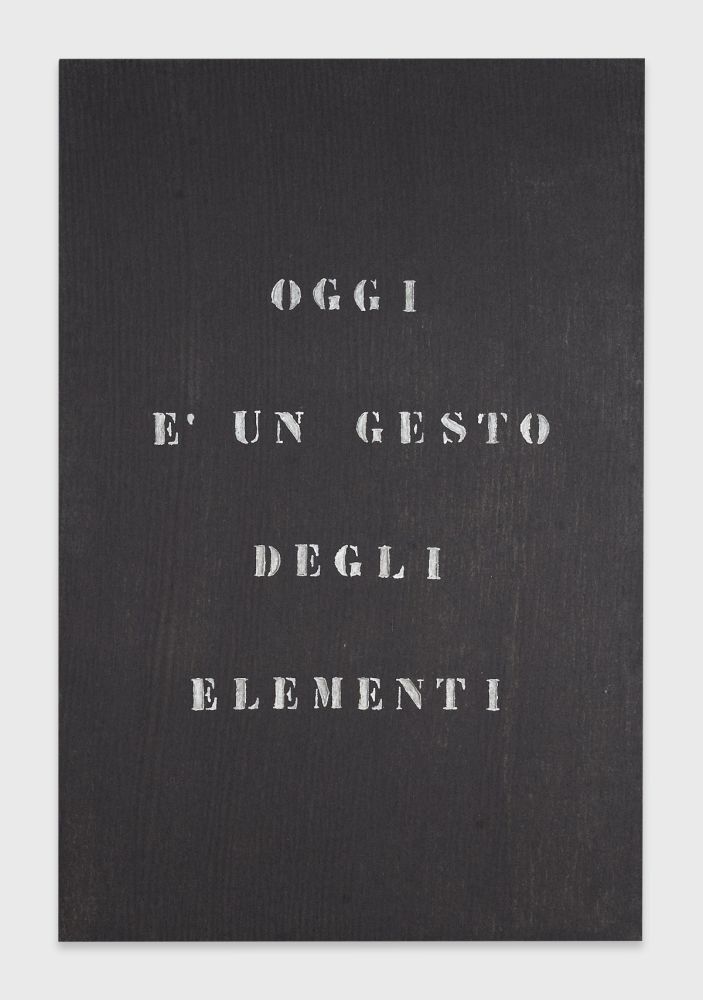
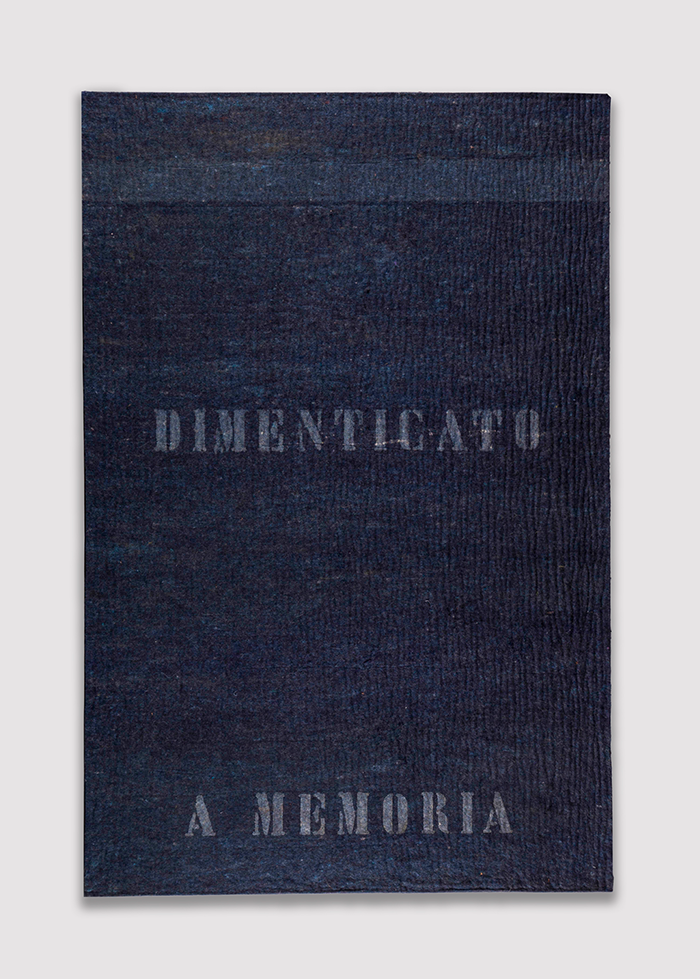
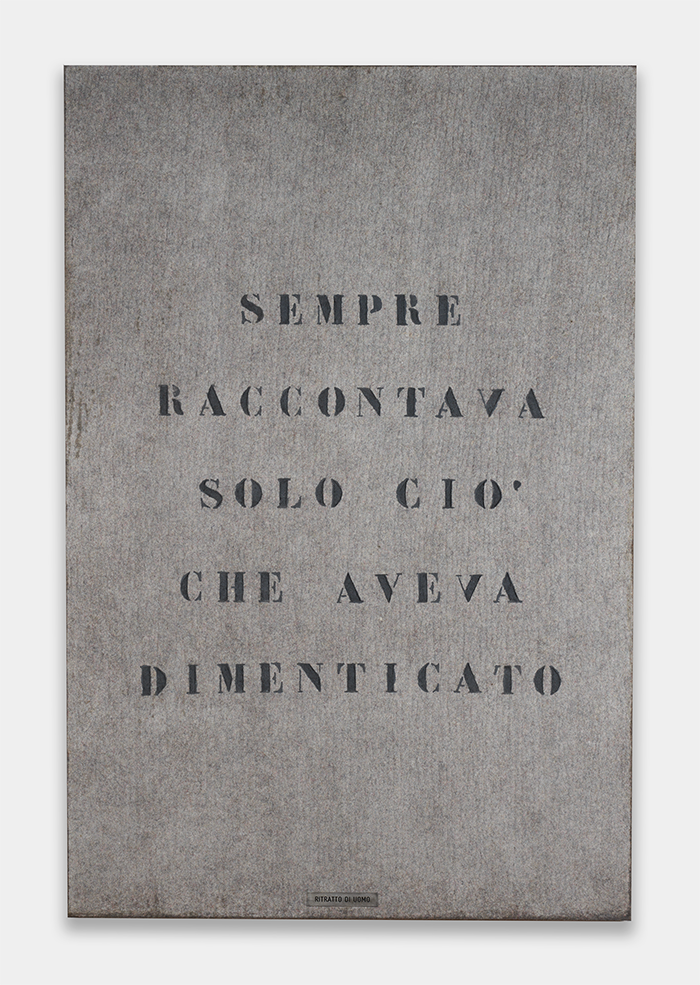
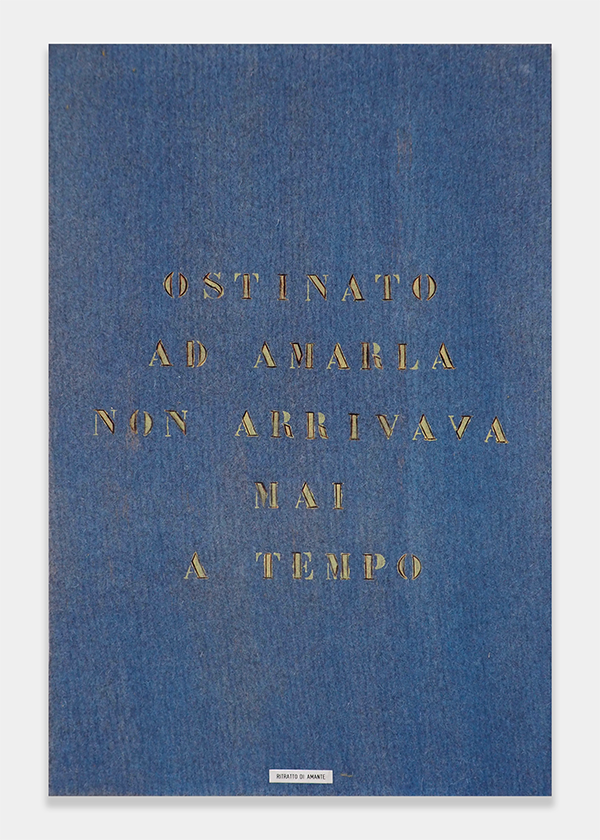





A multidisciplinary artist, writer, and poet, Vincenzo Agnetti was a leading figure of Italian conceptual art in the 1960s and 70s. Born in Milan on 14 September 1926, Agnetti graduated from the Brera Academy and later attended the Piccolo Teatro school. Initially, he made paintings inspired by Art Informel and was active as a poet and critic in the Milanese avant-garde scene. In the late 1950s and early 1960s, Agnetti befriended fellow artists Enrico Castellani and Piero Manzoni, with whom he collaborated on the journal Azimuth and shared philosophical and artistic ideals. Little else is known of his life at this time, other than his own cryptic account: “What I did, thought and heard, I’ve now forgotten by heart: this is the first authentic document.” In 1962 the artist left Milan and moved to Argentina, where he worked in the field of technological automation. This period of “art-no”, as he described it, was marked by a “refusal to paint” and “the gaining of awareness through low, dull work, for true freedom; it was about heading towards new horizons.” From 1967 to 1981, the year of his untimely death, Agnetti returned to Italy and embarked on a tireless production of works centered around poetry and the written word. Using language as both tool and medium, he inscribed words on felt in both English and Italian, recited them as part of performances, and translated them into images. For Agnetti, language was both a critical measure for understanding the world and a vast repository of cultural memory and history. In this respect, his works function as elements of a broader intellectual pursuit, generating a conceptual mechanism that remains with the viewer beyond the initial encounter.
